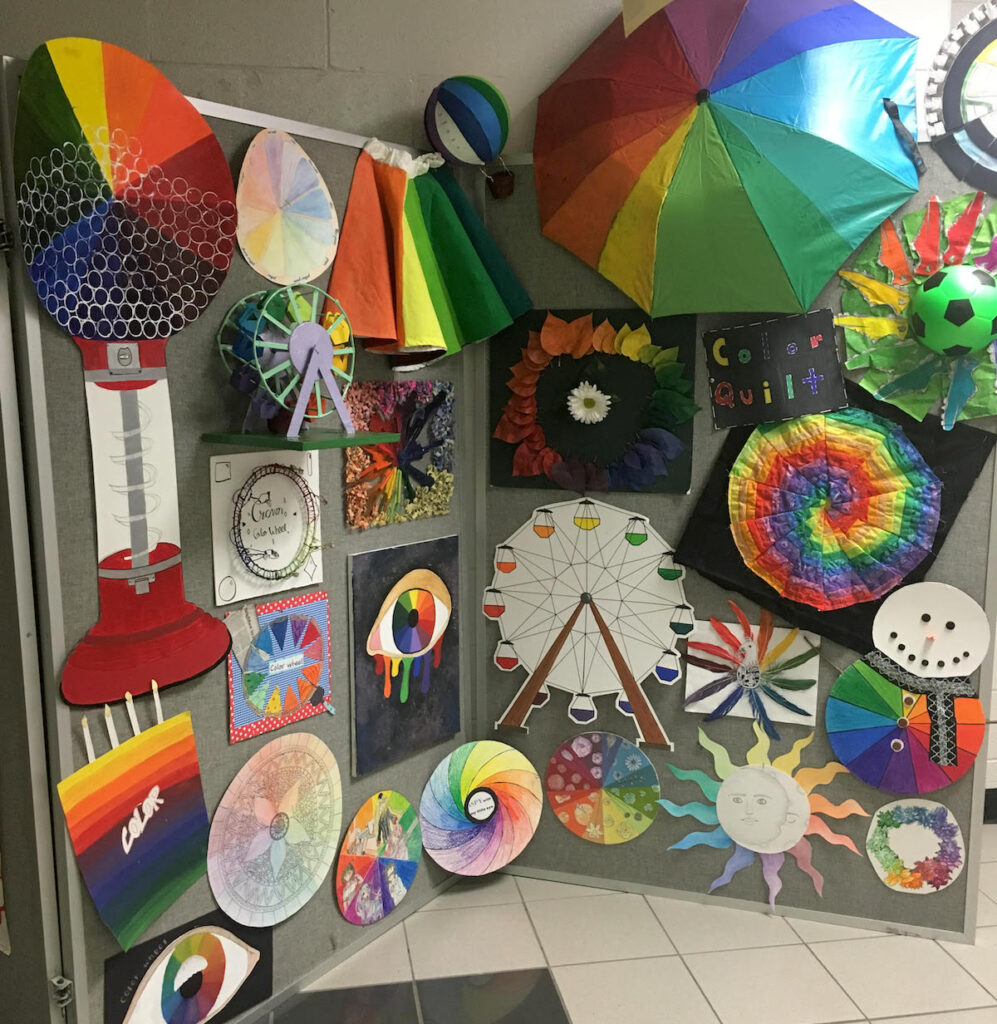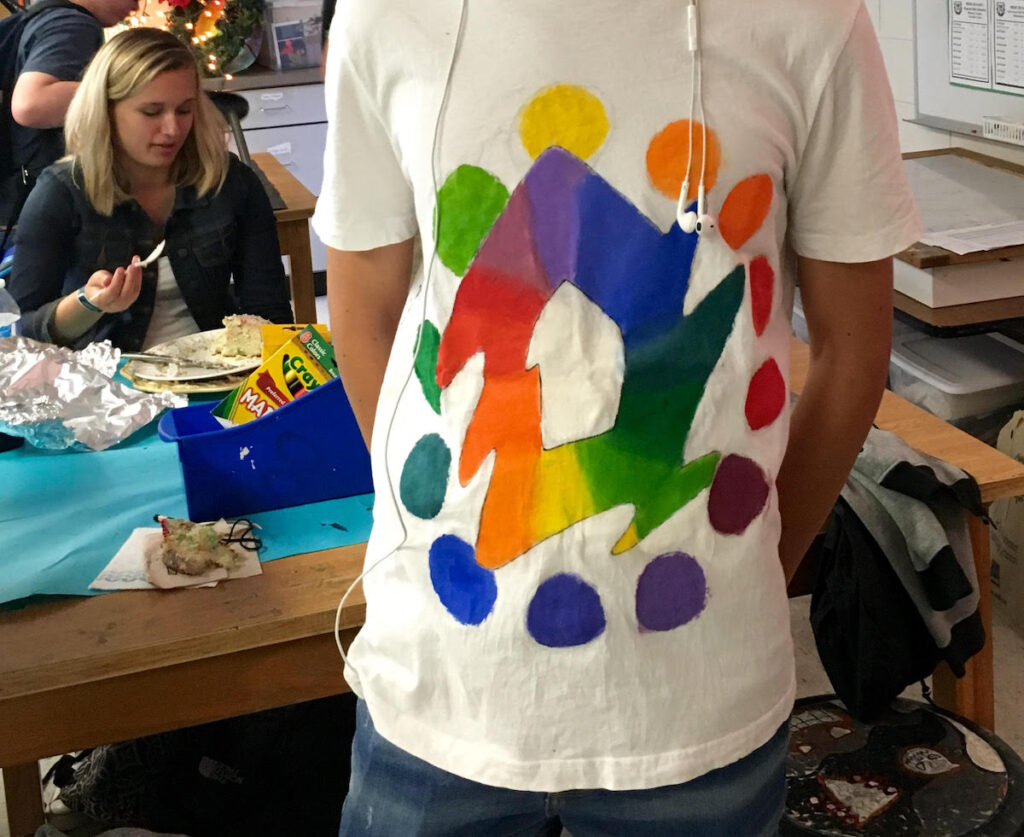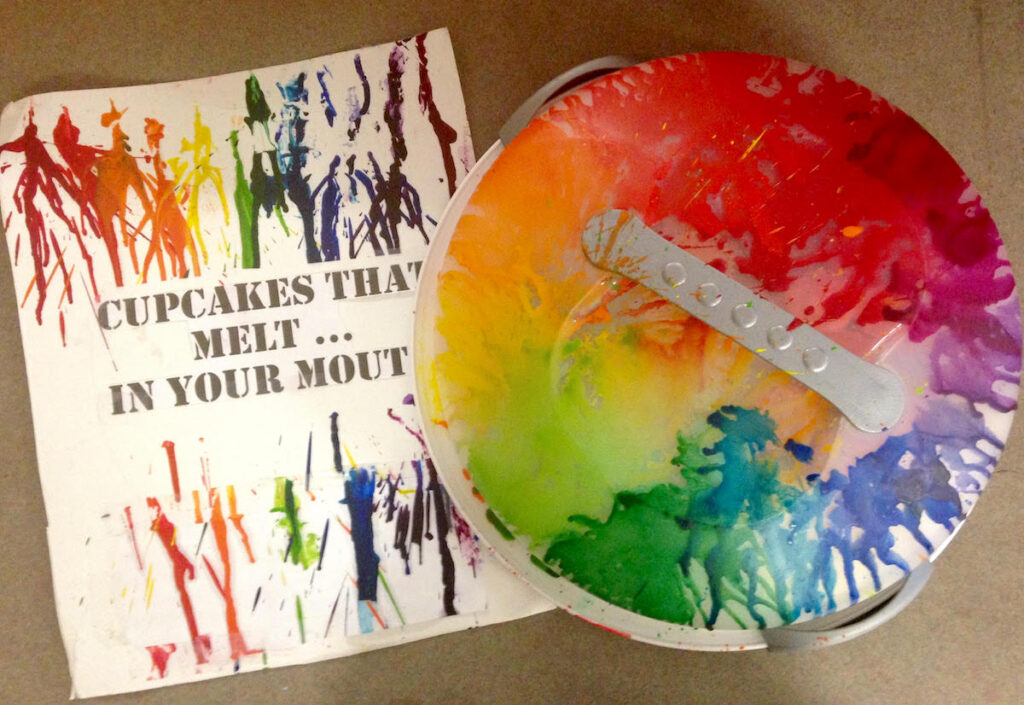Teaching students about the elements of art is an important part of our job as art educators. But often, these lessons can seem rote and boring.
Simply telling our students about color theory and testing them isn’t a successful strategy. However, it’s important to find something that works because color theory is such a foundational art skill.
Personally, I believe students need time to experiment and enjoy creative freedom as they learn color theory. Thus, the Creative Color Wheels Lesson came to fruition.
A Step-by-Step Guide to Creative Color Wheels

This lesson is best taught at a point in the year when students are familiar with various media, the elements and principles of art, and the sophisticated craftsmanship and care needed (and expected) in a high school visual art course. Here’s how it’s done.
1. Teach or Review Color Theory Basics
Begin by walking students through the color harmonies. Depending on the age of your students and your state or local standards, you might choose to include:
- Primary colors
- Secondary colors
- Tertiary colors
- Analogous colors
- Complementary colors
- Monochromatic colors
Then, discuss color vocabulary such as tint, shade, tone, hue, intensity, saturation, local color, etc.
2. Introduce the Project
Once you cover all of the color theory information, it’s time to open up the project. The goal is to make it as student-centered as possible. Students can, quite literally, do anything they want for the project as long as they meet the objectives.
And those objectives are simple.
- The final piece must be round to echo a color wheel.
- The final piece must include the primary, secondary, and tertiary colors.
That’s it! Of course, students immediately want to know what media they can use. My response is, “Whatever you want. You tell me!” And then they have questions about the size. Once again, my response is, “I don’t know, but I can’t wait to see what you come up with!”
Looking for even more creative color theory ideas? Do not miss the Color Theory Basics PRO Learning Pack. Johanna shares the best strategies for introducing theory, how to help your students experiment with color mixing, and engaging activities to support learning. You’ll also find many downloadable resources that would be perfect for this lesson!
3. Gather Ideas
Motivate your students by having them review their notes and then begin doing some research via Pinterest or Google Images. The goal is to get ideas from which to springboard. Their first homework assignment is to be prepared to share at least three ideas they will begin exploring the following day.
The ideas that come in are incredible! Each year my students seem to get more creative. I have seen fans, dresses, cakes, slushies, maps, wreathes, shoes, garbage lids with recycled dyed “trash,” balls, and more.

4. Create!
Opening up the media and size limitations allows our students the creativity to push their work to new levels. I am beyond impressed with the results. Most often, students can complete the work in class. However, sometimes you will have students who want to do things like cook or sew at home to complete their piece. What then?
My solution was pretty simple. These students created an ad or marketing tool to accompany whatever piece they were working on at home.

5. Present the Work
The final step is to have students present their creative color wheels to the class. As students work on their projects, they get more and more excited to have the opportunity to share their art. This is an exciting event and one that motivates them to work extra hard on their creative projects.
By the time we complete all of the presentations, students are more than ready for their color assessment, and I am content knowing students have mastered and authentically learned about color theory on many different levels!
How do you teach color theory to your students?
What type of choice-based lessons work for you and your students?
Magazine articles and podcasts are opinions of professional education contributors and do not necessarily represent the position of the Art of Education University (AOEU) or its academic offerings. Contributors use terms in the way they are most often talked about in the scope of their educational experiences.





